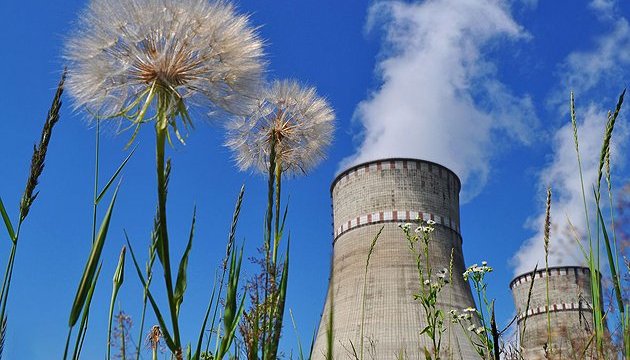УДК 621.039.7:628.3 • Issue 5 (33) / 2021 • 86-93 pages
Yu. Bondar, S. Kuzenko
Yu. Bondar, PhD (geol.-min.sci.), senior sci., State Institution «The Institute of Environmental Geochemistry of National Academy of Sciences of Ukraine», ORCID: 0000-0002-5511-1387, juliavad_peremoga@ukr.net
Kuzenko, Researcher, State Institution «The Institute of Environmental Geochemistry of National Academy of Sciences of Ukraine», ORCID: 0000-0002-5511-1387
Abstract
The development of effective adsorbents for the selective removal of radionuclides from contaminated waters is a topical issue, the solution of which is necessary to reduce the amount of hazardous liquid radioactive waste and to improve safety of the waste management. Natural zeolites have been used for a long time for deactivation of contaminated water, however their wider application for selective removal of radionuclides is limited due to reducing of selectivity caused by increasing solution mineralization, as well as the reversible nature of the radionuclides’ adsorption. Synthesis of composite sorbents based on natural zeolites with incorporated sorption-active inorganic phase is considered as a promising approach to fabricate inexpensive adsorbents with high selectivity to certain radionuclides. The paper presents the results on synthesis of a composite sorbent for the selective removal of cesium ions based on clinoptilolite tuff of the Sokyrnytsia deposit (Ukraine) with the incorporated potassium-copper ferrocyanide phase. Samples of natural and composite clinoptilolite tuff were tested for selective removal of cesium ions from single- and multicomponent model solutions with high content of competing sodium and potassium ions. Mineralization of the solution has been shown to have a significant influence on the adsorption parameters of natural clinoptilolite, while composite adsorbent samples demonstrated high adsorption parameters in sorption of cesium ions from model multi-component solutions with high salt content. The presence of the ferrocyanide phase has been proved to result in an increase in the selectivity of the composite adsorbent in comparison with the natural clinoptilolite samples, as well as in strengthening fixation of adsorbed cesium ions.
Key words: clinoptilolite, composite adsorbent, potassium-copper ferrocyanide, selectivity, 137Cs, liquid radioactive waste.
Article
Reference
| 1. V. , Kononenko O. , Mikheev S., Gelis V. (2010), Ra-diochemistry, 52 (3): 281- 283. https://doi.org/10.1134/S1066362210030100 |
||||
| 2. Voronina, A.V., Blinova, M.O., Kulyaeva, I.O. et al. (2015), Lehto J., Harjula R. (1999), Radiochim. Acta., 86: 65 – 70. https://doi.org/10.1524/ract.1999.86.12.65 |
||||
| 3. Application of Ion Exchange Process for the treatment of Radioactive Waste and Management of Spent Ion Exchangers : IAEA-TECDOC -408. (2002), IAEA, Vienna, 114 p. | ||||
| 4. Myasoedova, G. V., Nikashina, V. A. (2006), Ros. him. zh., L (5): 55-63. (Russ.). | ||||
| 5. Bondar Yu.V., Kuzenko S.V., Slivynskiy V.M. (2017), Nuclear Physics and Atomic Energy, 18(1): 106 – 114 (Ukr). https://doi.org/10.15407/jnpae2017.01.106 |
||||
| 6. Tananaev, I.V., Saifer, G.B., Kharitonov, Yu.Ya. et al. (1971), Ferrocyanide chemistry, Nauka, Moskva, 320 p. (Russ.). | ||||
| 7. Tusa E.H., Paavola A., Harjula R. et al. (1994), Nucl. Technol., 107: 279- 284. https://doi.org/10.13182/NT94-A35008 |
||||
| 8. Vincent T., Vincent C., Guibal E. (2015), Molecules, 20: 20582 – 20613. . https://doi.org/10.3390/molecules201119718 |
||||
| 9. Dyer A., Hriljac J., Evans N., et al. (2018), J. Radio-anal. Nucl. Chem., 318 (3): 2473-2491. https://doi.org/10.1007/s10967-018-6329-8 |
||||
| 10. Hofstetter K. J., Hitz C. G. (1983), Separ. Sci. Tech-nol., 18: 1747- 1764. https://doi.org/10.1080/01496398308056125 |
||||
| 11. Tarasevich Yu.I. (1996), Himiya I tehnologiya vody, 18 (2): 127- 131. (UA). | ||||
| 12. Lehto J., Koivula R., Leinonen H., et al. (2019), Separ. Purific. Reviews, 48 (2): 122- 142. https://doi.org/10.1080/15422119.2018.1549567 |
||||
| 13. Yaroshenko K.K., Shabalin B.G., Koliabina I.L., Bondarenko G.M. (2019), Geochemistry of Technogenesis, 30 (2): 308-313. (UA). | ||||
| 14. Mimura H., Kimura M., Akiba K., et al. (1999), Sep. Sci. Technol. , 34 (1). р. 17- 28. https://doi.org/10.1081/SS-100100633 |
||||
| 15. Kazemian H. , Zakeri H., Rabbani M.S. (2006), J. Ra-dioanal. Nucl. Chem., 268 (2): 231- 236. https://doi.org/10.1007/s10967-006-0158-x |
||||
| 16. Milyutin Radiochemistry, 57 (5):522-529. | ||||
| 17. Voronina A.V., Kulyaeva I.O., Gupta D.K. (2018), Ra-diochemistry, 60 (1): 35-41. https://doi.org/10.1134/S106636221801006X |
||||
| 18. Grechanovskaya, E.E. (2010), Mineral. Journ., 32 (4): 12-22. (UA) | ||||
| 19. Bondar Yu., Kuzenko S., Han D-H. (2014), Nanoscale Res. Lett., 9: 180 . https://doi.org/10.1186/1556-276X-9-180 |
||||
| 20. Pechar F., Rykl D. (1981), Chem. zvesti., 35(2): 189- 202. https://doi.org/10.1111/j.1558-5646.1981.tb04878.x |
||||
| 21. Nakamoto K. (1978), Infrared Spectra of Inorganic and Coordination Compounds. Third ed, Wiley, New York. | ||||
| 22. Milyutin V.V., Nekrasova N.A., Haritonov O.V., et al. (2016), Sorbtsionnye i khromatograficheskie protsessy, 16 (3): 313-322. (Russ.). | ||||
| 23. Popov V.E., Il’icheva N.S., Stepina I.A.et al. (2011), Radiochemistry, 53 (1): 97-102. https://doi.org/10.1134/S1066362211010139 |
||||
| 24. Didukh, M. I., Lazaryev, М. М. (2010), VZNAU, 47 (1), pp.3-10. (UA) | ||||
